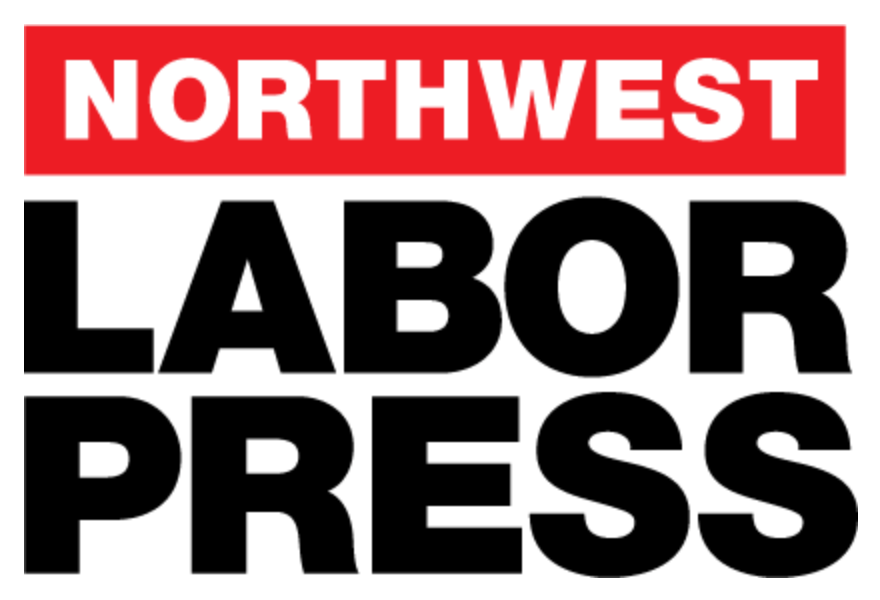The average CEO made 268 times the pay of the average worker last year at America’s 500 largest publicly traded companies. That’s a highlight from the latest annual Executive Paywatch report from the national AFL-CIO.
The labor federation has kept tabs on corporate CEO pay since 1997. It publishes the results at paywatch.org, where a sortable and searchable database lets you see what CEOs are paid at any publicly traded company in the United States. The site also shows the ratio of what companies pay their CEOs to what they pay their median worker.
“Today’s typical worker would have had to start working before the American Revolution in 1776 to earn what the average CEO made just last year,” said AFL-CIO secretary-treasurer Fred Redmond in a press call announcing the results of the report. “That’s the span of five career lifetimes, and that’s just an average.”
Redmond was referring to companies in the S&P 500 — the 500 companies with the highest total stock value. At S&P 500 companies, the average CEO pay was $17.7 million, and the average CEO-to-worker pay ratio was 268-to-1.
The most outrageous CEO-to-worker pay ratio was at Nu Skin Enterprises, where the CEO made 10,377 times the median worker. But that was a bit of a fluke: Nu Skin is a multilevel marketer of personal care products and dietary and nutritional supplements. Its CEO made just $5,838,579 in 2023, while the its amateur salesperson averaged $563.
The next highest ratio was at Abercrombie & Fitch Co. — 6,076:1. There the CEO made $15 million, while the company’s high-turnover part-time minimum wage mostly retail work force earned $2,474 on average. Not far off was The Gap, Inc., which paid its CEO $14.4 million, 2,160 times the median employee earnings of $6,646 for the year.
The only reason we know the ratio of CEO to worker pay is that Congress mandated its disclosure in the Dodd-Frank Wall Street Reform and Consumer Protection Act of 2010, which passed in the wake of the financial market meltdown of 2008. The Securities and Exchange Commission took its time to roll out the disclosure requirement, and Republicans in Congress tried unsuccessfully to repeal the disclosure requirement in 2017. But since 2018, companies have been reporting the ratio of what they pay their CEO compared to what they pay their median worker.
Wall Streeters howled and complained, but the disclosure sheds light on astronomical levels of inequality, and maybe in a small way shames corporations into being a little less unequal.
It wasn’t always the case that CEOs were paid hundreds of times what workers made. In 1965, the era of America’s greatest industrial might, the typical U.S. CEO made 21 times the pay of the average worker, according to research by the Economic Policy Institute.
The data in the AFL-CIO’s Executive Paywatch report covers all 3,700 companies that are publicly traded on U.S. stock markets, but it doesn’t include companies that are privately held or whose stock is listed on foreign stock exchanges. That’s actually a growing problem for transparency, because private equity funds — lightly regulated pools of private investment capital — are increasingly buying up stocks of publicly traded companies and taking them private. When companies become privately held, they are no longer listed on public stock exchanges and that means they no longer have to publicly disclose earnings, CEO pay, and the pay ratio. According to reporting by CNN, the number of companies that are publicly traded on U.S. stock exchanges has dropped from a peak of over 8,000 in 1996 to just about 3,700 today, and there are now about five times as many U.S. companies owned by private equity firms as companies that are publicly traded.
Oregon’s top-paid CEOs
(at publicly traded companies)
In Oregon, where 17 publicly-traded companies are headquartered, 2023’s top fat cat was John Donahue II of Nike, who took in $32.8 million. In April, the company announced plans to lay off 740 employees, 2% of its global employment, but 318 of the layoffs were executives. The layoffs also hit about 20% of employees working on sustainability.
- Nike John Donahoe II $32,789,885
- Lithia Motors Bryan DeBoer $19,285,990
- Lattice Semiconductor James Anderson $14,380,598
- PGE Maria Pope $6,965,757
- Greenbrier Lorie Tekorius $5,639,481
- Schnitzer Steel Tamara Lundgren $5,009,099
- NW Natural David Anderson $3,537,654



